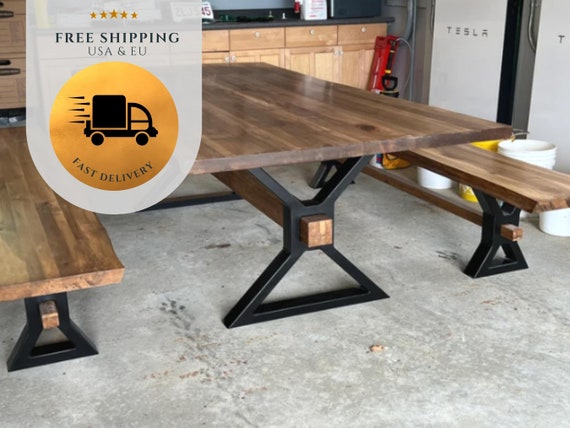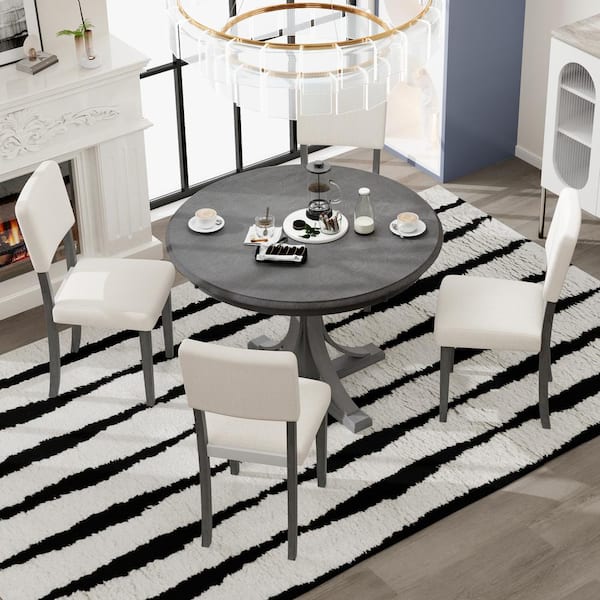Enhance Your Dining Room with Unique and Modern Dining Room Table Legs
Enhance Your Dining Room with Unique and Modern Dining Room Table Legs
Blog Article
From Standard to Modern: Locate the Ideal Eating Space Table Legs for Your Design
While classic styles such as cabriole and transformed legs evoke a feeling of timeless sophistication, modern designs like hairpin and geometric options offer an opportunity for striking visual interest. As you take into consideration these components, the inquiry continues to be: how can you perfectly incorporate these varied leg designs to produce an unified eating experience?
Comprehending Table Leg Styles
The selection of dining-room table leg designs can significantly influence both the looks and capability of the space. Each leg design adds distinct aesthetic elements and practical attributes, satisfying diverse style choices and usage demands. Comprehending these designs is critical for picking the ideal table that lines up with your total interior decoration vision.
For circumstances, tapered legs supply a clean, classic appearance that can enhance an area's sophistication, while pedestal bases supply security and maximize legroom, making them perfect for smaller sized spaces. Barrette legs, a hallmark of mid-century modern style, present a commercial style, enabling a ventilated, open feeling. Trestle legs evoke rustic beauty, giving robust support and a feeling of eternity.
Wood legs can bring warmth and structure, whereas steel alternatives commonly convey a streamlined, contemporary ambiance. Eventually, recognizing table leg styles is necessary for creating a natural eating location that mirrors personal design while making certain usefulness and comfort.
Conventional Table Leg Options
When picking dining-room table legs, traditional alternatives usually symbolize classic style and workmanship. These styles mirror a rich heritage and a commitment to quality, making them ideal for those that value traditional aesthetics.
One of one of the most legendary typical leg designs is the cabriole leg, defined by its graceful bent form. This design typically features ornamental makings and is most frequently found in Queen Anne and Chippendale furniture. One more preferred alternative is the turned leg, which flaunts a series of smooth, rounded forms that offer a classic appearance while maintaining stability.
In addition, the straight leg, while simple, uses a basic and durable framework that can mix flawlessly with a variety of tabletop designs. For those drawn to ornate outlining, claw-and-ball feet legs stimulate a sense of majesty and can serve as a spectacular focal factor in any kind of dining space.
Lastly, pedestal bases, although not purely legs, supply an alternative standard choice that enables adequate legroom and can be beautifully carved. Each of these traditional leg designs adds to the general ambiance of a dining-room, weding feature with aesthetic allure.

Modern Table Leg Layouts
Modern table leg designs offer a varied series of styles that stress cutting-edge products and clean lines. These styles typically focus on functionality while functioning as striking centerpieces within a dining room. Minimal aesthetic appeals prevail, with legs crafted from materials such as metal, glass, and engineered timber, which add to a airy and modern feel.
One prominent layout is the barrette leg, identified by its slender, tapered framework that supplies stability without frustrating the table top (dining room table legs). This style is typically discovered in mid-century contemporary furniture and can easily complement different eating table shapes. One more fad is making use of geometric forms, where legs might handle angular or asymmetrical types, adding aesthetic passion and a touch of creativity

Blending Styles for Distinct Areas
Usually, house owners look for to produce distinct dining spaces that show their individual design by blending numerous design components. This method permits the incorporation of diverse appearances, resulting in an unified yet unique atmosphere. Pairing a rustic wooden table with sleek, modern metal legs can produce an appealing contrast that elevates the area's overall appeal.
Additionally, incorporating vintage table legs with modern table tops can evoke a sense of history while preserving a modern-day perceptiveness. Such mixes not just showcase private taste yet additionally encourage imagination, permitting homeowners to curate a space that really feels both personal and welcoming.
Shade plays a critical duty in this blending procedure; choosing table legs that complement or comparison with the existing shade plan can enhance visual passion. For instance, whitewashed legs can soften the boldness of a dark table surface area, creating a balanced visual.
Tips for Choosing the Right Legs
Choosing the right table legs is crucial for achieving both functionality and aesthetic charm in your eating room. Begin by taking into consideration the general design of your area. Traditional settings take advantage of legs that feature intricate makings or transformed styles, while contemporary spaces may require streamlined, minimal designs.
Next, examine the elevation and stability of the legs. dining room table legs. Standard table range in between 28 to 30 inches in height, so make certain the legs enhance this measurement for comfort. Furthermore, robust materials, such as straight from the source wood or metal, can enhance stability and longevity
Review the leg form too-- options include directly, tapered, or pedestal styles. Straight legs offer a classic appearance, while tapered legs can include a touch of elegance. Pedestal bases supply ample legroom and are ideal for smaller sized rooms.
Final Thought
In recap, picking the optimal eating room table legs needs cautious consideration of both contemporary and typical designs. By balancing leg design, elevation, and material with the general design, a natural and inviting ambience can be achieved.
The range of eating area table leg styles can substantially influence both the appearances and performance of the area. Ultimately, comprehending table leg designs is important for creating a cohesive eating area that shows individual style while ensuring usefulness and comfort.One of the most legendary standard leg styles is the cabriole leg, identified by its stylish rounded shape. Straight legs offer a timeless appearance, while tapered legs can include a touch of beauty.In recap, selecting the perfect dining space table legs needs cautious consideration of both contemporary and traditional styles.
Report this page